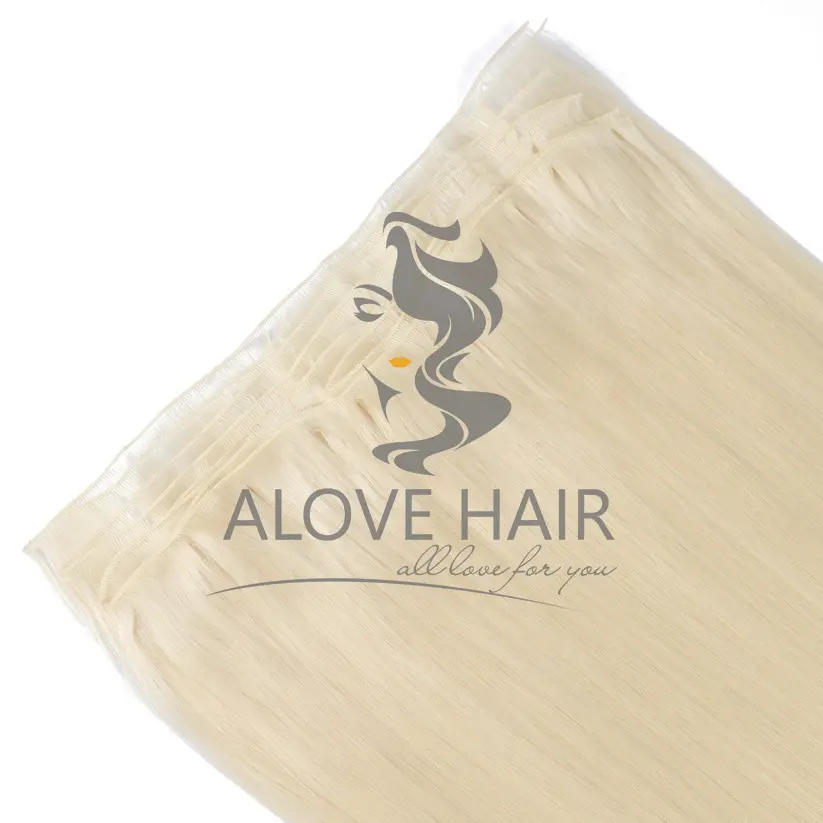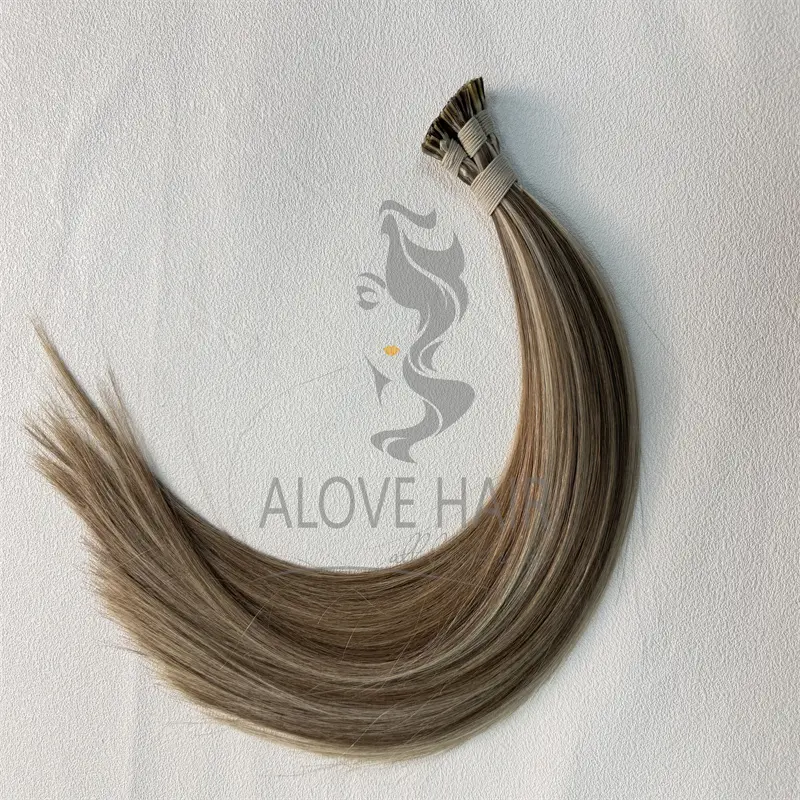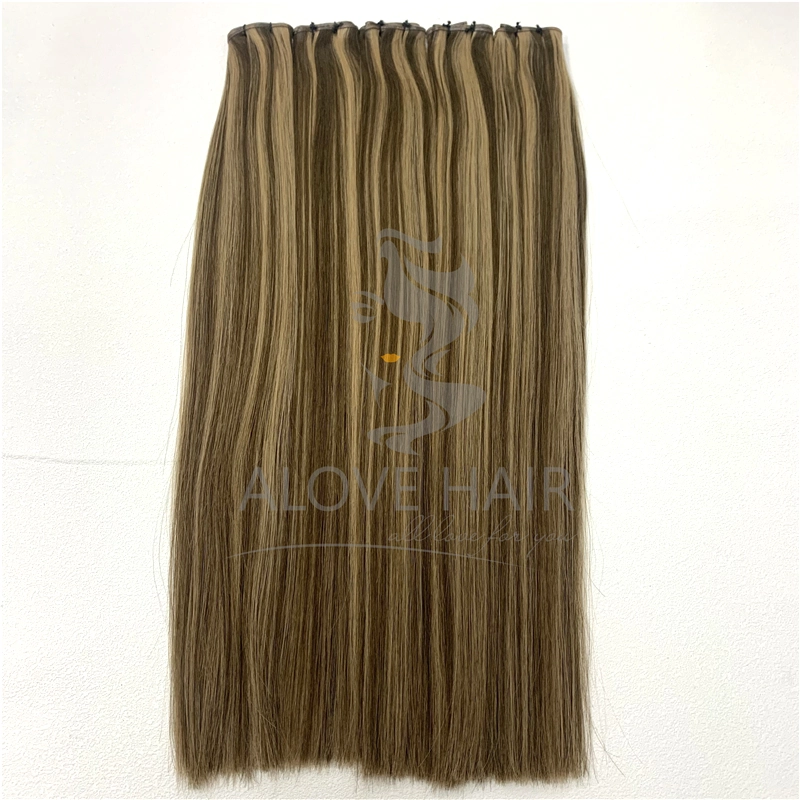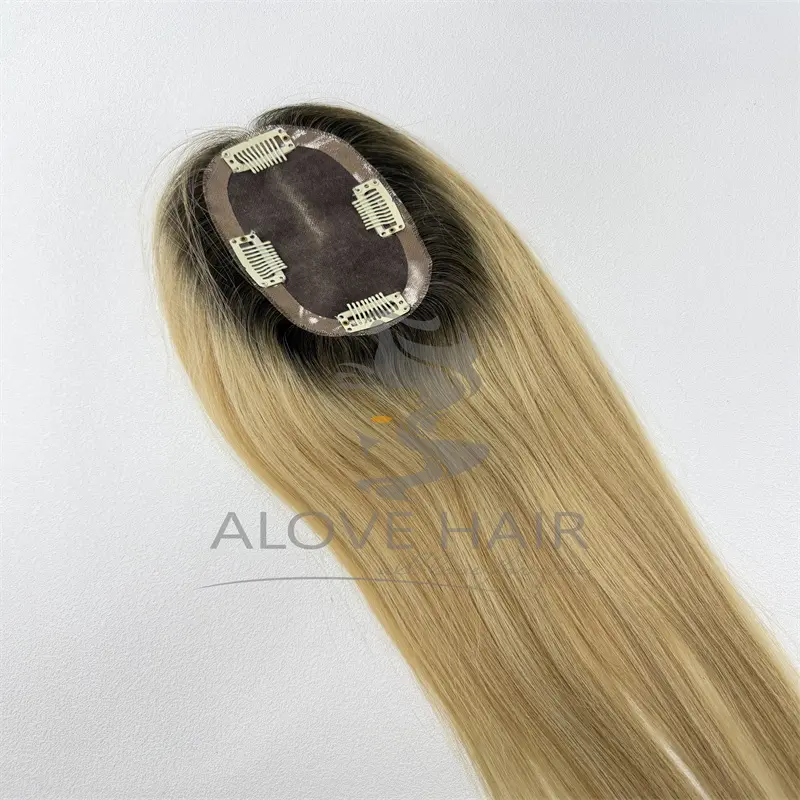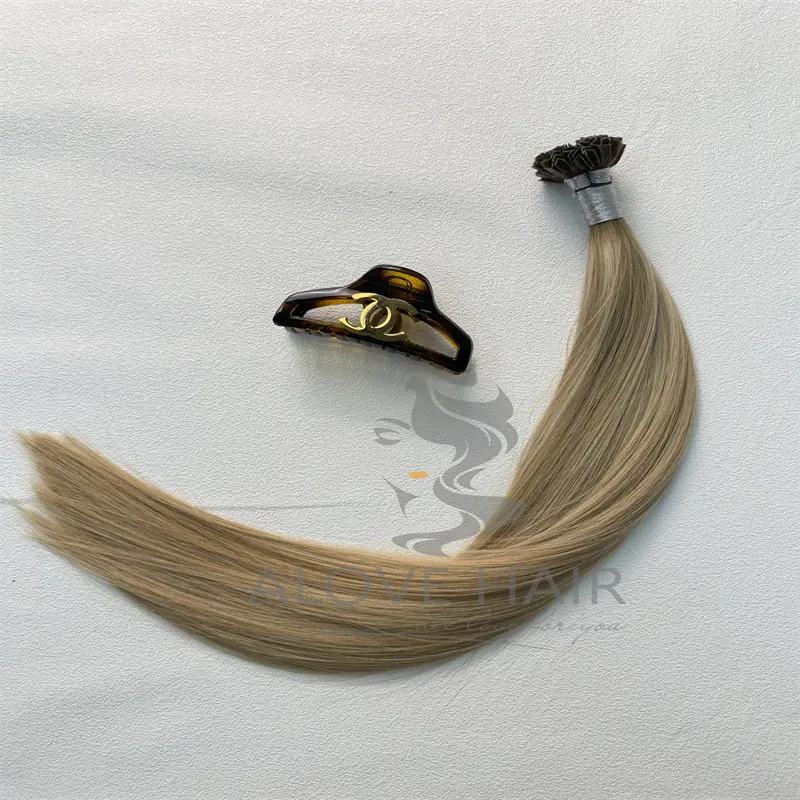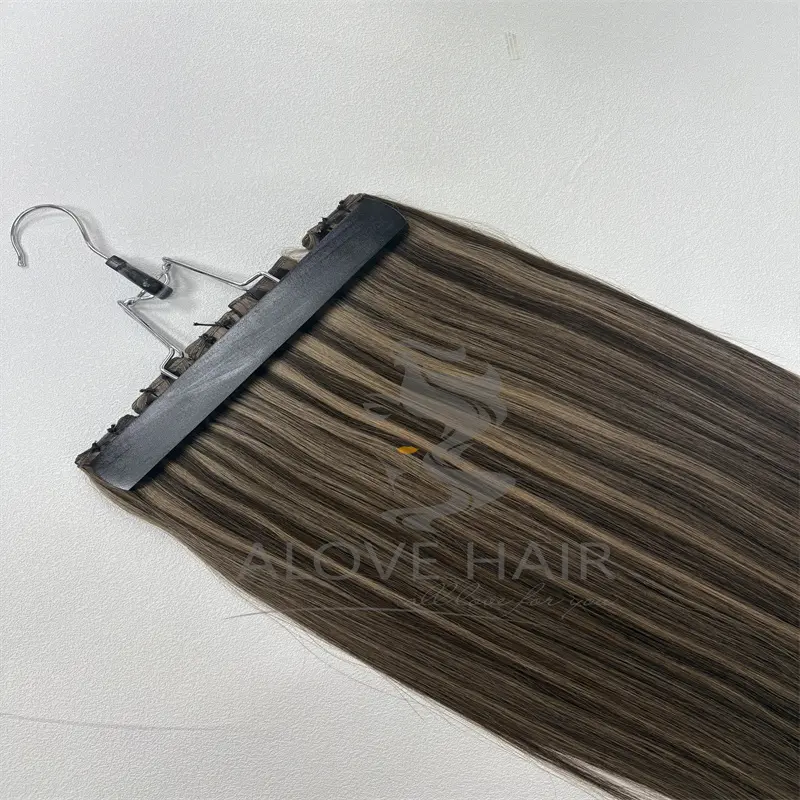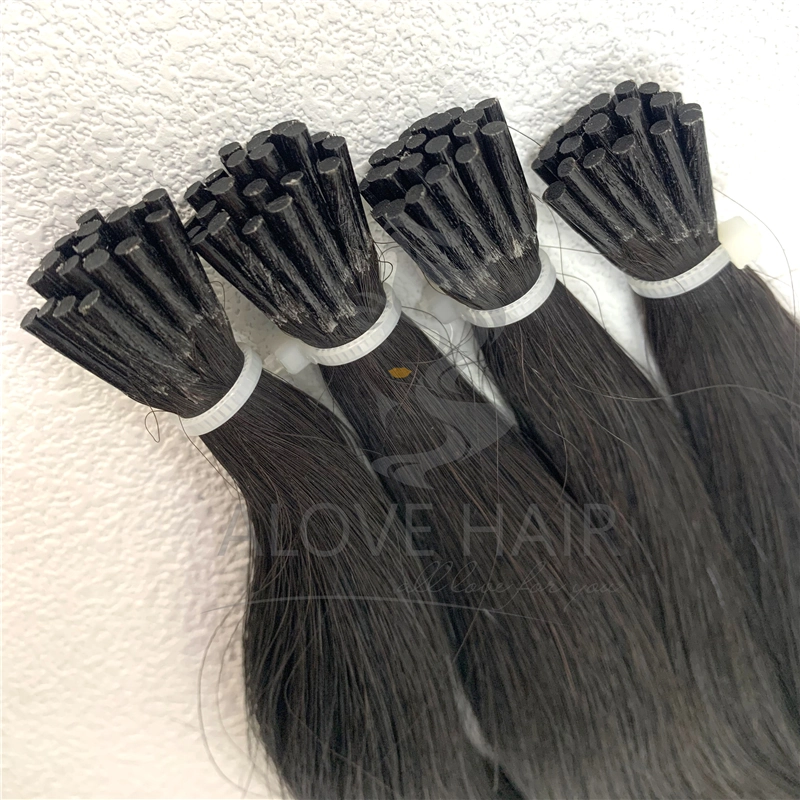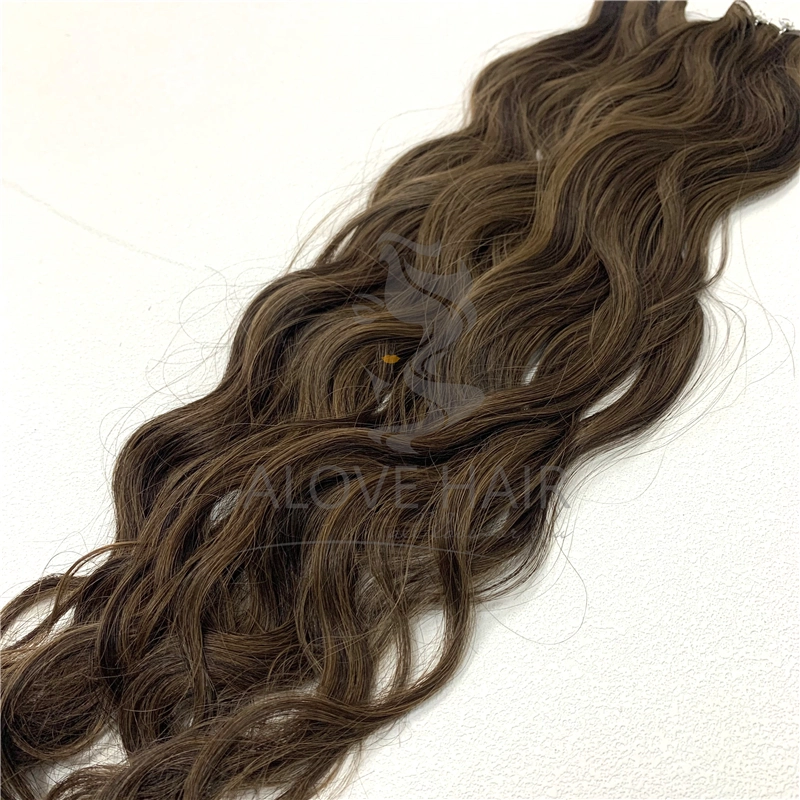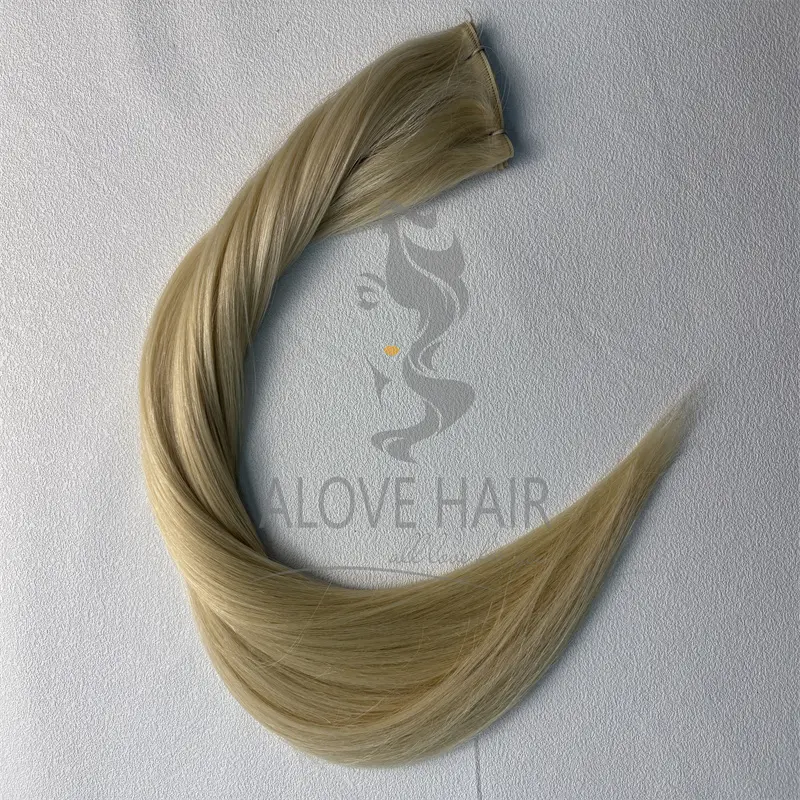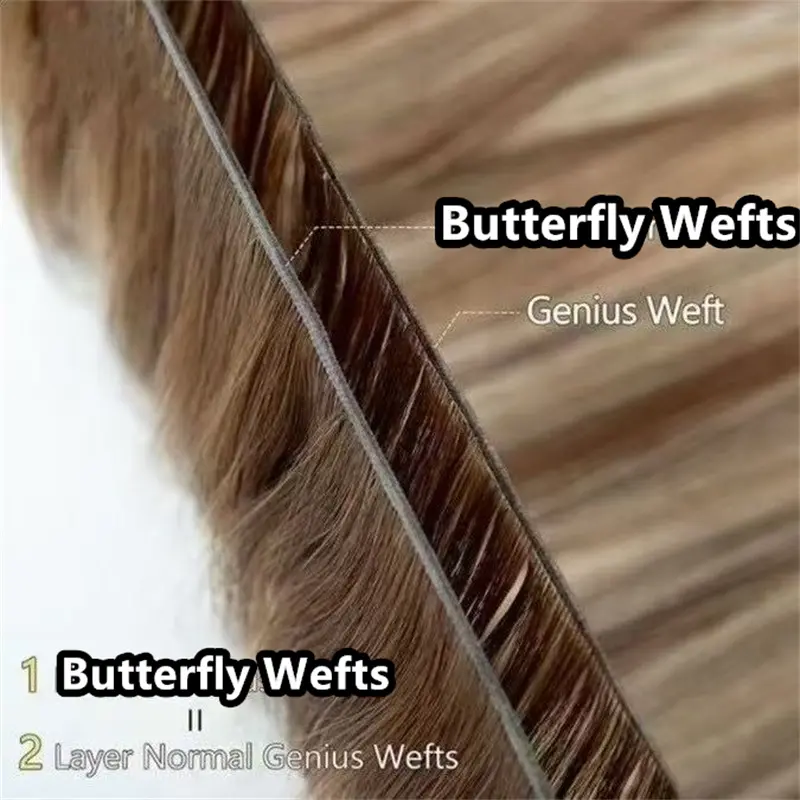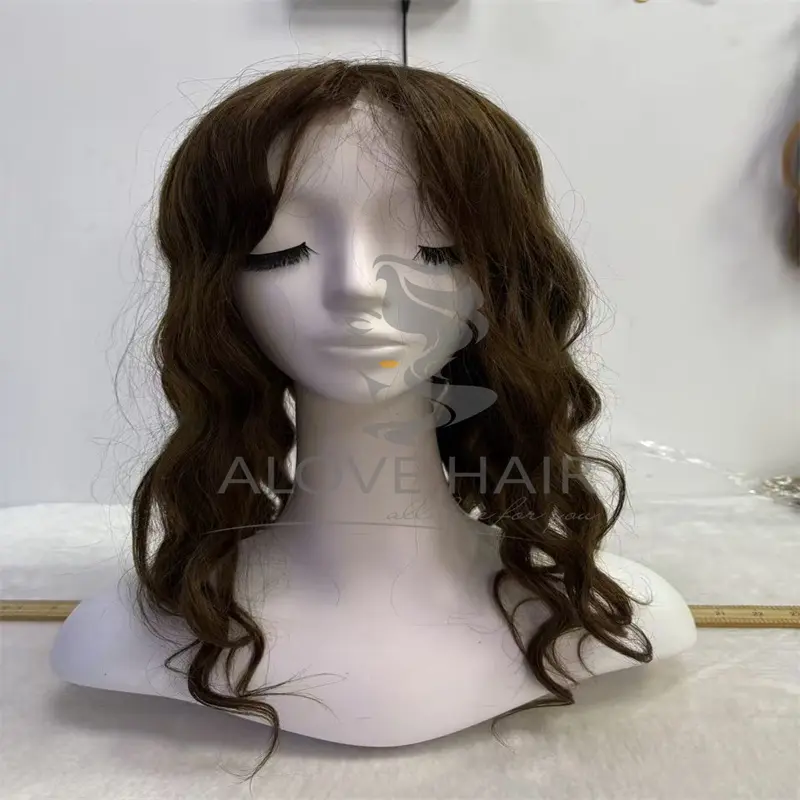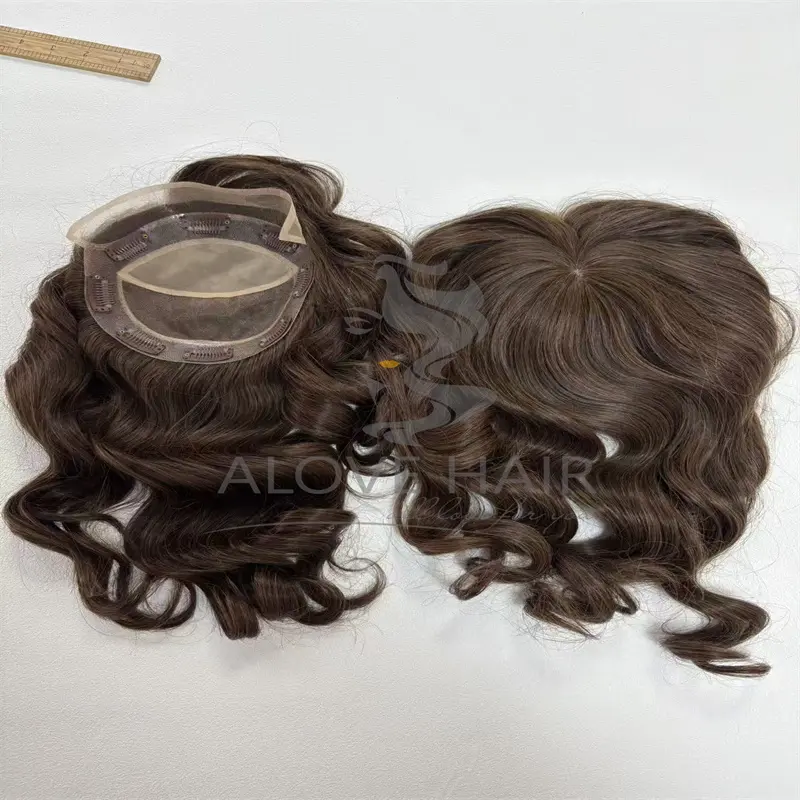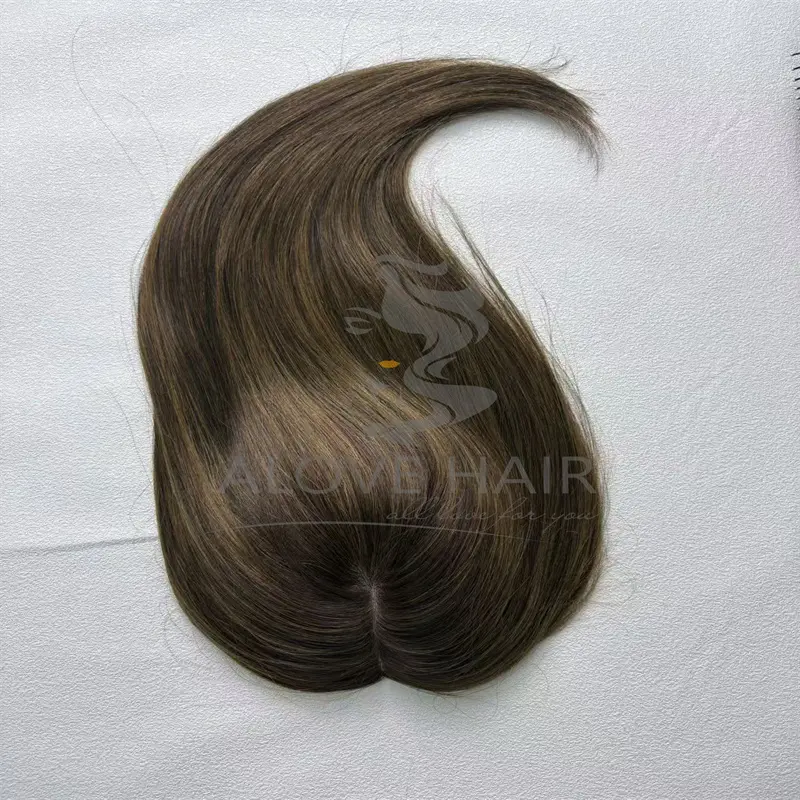Introduction: Two Mainstream Technologies in the Hair Extension Market
Diversified scenarios of hair extension demand: From short-term beauty enhancement for weddings and stage styling, to long-term improvement of hair thinning in daily commutes, and even "hair repair" needs after damaged perming and coloring, hair extensions have become an important part of modern people's styling management.
Positioning of core comparison objects: As an emerging technology in recent years, Genius Weft (Elf Weft) takes "invisibility and lightness" as its core selling points; Machine Weft (Machine-made Weft), as the most popular traditional technology in the market, relies on "stability and cost-effectiveness". The two cover different demand levels.
Value of this article: By disassembling process details, experience differences and practical scenarios, it helps readers avoid the misunderstanding that "the expensive one is the best" and find a hair extension solution suitable for hair quality, budget and living habits.
I. Essence of Craftsmanship: Core Differences from Production Principles
1.1 Genius Weft: Innovative Breakthrough of New Hybrid Craftsmanship
Craft characteristics: Adopting the composite technology of "precision machine weaving + PU glue sealing", the machine arranges hair strands with 0.1mm precision (about 30-40 strands per centimeter), and the roots are sealed with medical-grade PU glue for the second time, which not only ensures the firmness of the hair strands but also eliminates the thickness of traditional weft tapes.
Structural details: The base is a 0.5mm ultra-thin PU film (width 2-3cm), and the hair strands grow vertically from the film body (no obvious inclination angle). There is no protruding weft tape at the root, and the edges are arc-treated to avoid scratching the scalp.
Raw material requirements: More than 90% use high-quality human hair (mostly "virgin hair" without perming or coloring), which needs to go through deacidification and smoothing treatments to ensure consistency with the gloss and thickness of one's own hair. Synthetic hair strands are rarely used (prone to reflection and tangling problems).
1.2 Machine Weft: Classic Logic of Traditional Mass Production
Craft characteristics: Pure automatic machine weaving, fixing hair strands on wide weft tapes (width 4-6cm) by "winding + edge locking" method, which can produce 5-10 meters of weft per minute, belonging to a standardized mass production mode.
Structural details: The weft tapes are mostly made of nylon or cotton (thickness about 2-3mm), and the edges adopt double-thread edge locking technology (similar to fabric edge locking) to prevent hair strands from falling off the edge of the weft tape; the arrangement density of hair strands is relatively uniform, but the connection point between the root and the weft tape is obvious.
Raw material requirements: Compatible with human hair and synthetic hair (such as high-temperature silk, protein silk). Among them, human hair is mostly of mid-low grade (may have been permed and colored multiple times), and the proportion of synthetic hair can reach 30%-50%, with stronger cost controllability.
II. Core Performance Comparison: From Comfort to Practicality
2.1 Wearing Experience: Weight, Fit and Scalp Friendliness
| Dimension | Genius Weft | Machine Weft |
| Total Weight for Full Head | About 100-150g (equivalent to 3-4 eggs) with 10-15 bundles (5-8g per bundle) | About 200-250g (equivalent to 5-6 eggs) with 6-8 bundles (15-20g per bundle) |
| Fit Detail | PU base has micro-elasticity, bends naturally with head movement (no foreign body sensation) | Weft tape is hard, easy to form 0.5-1mm gap with scalp when bowing, obvious protrusion when touched |
| Scalp Adaptability | No scattered hair (regrowth rate < 5%), smooth PU film surface, no irritation after sweating/oiling | Fine thread residues may remain on weft tape edges; 30% of sensitive scalp users report mild itching after 3 days, especially obvious friction in summer |
2.2 Concealment and Naturalness: The "Invisibility" Key for Daily Styling
Root concealment scene test:
When tying a low ponytail: Due to the ultra-thin nature of the PU base, Genius Weft has almost no trace 2cm from the root, and the hair strands fall naturally; the weft tape of Machine Weft will form a thin "horizontal shadow" at the root, especially obvious under light.
With hair down: The hair strands of Genius Weft transition naturally from the base (length gradient difference < 1cm), and there is no layering with one's own hair from a distance; due to the thickness of the weft tape, Machine Weft has a slight "fault feeling" about 1-2cm from the root of the hair strands, which needs to be transitioned by trimming.
Hair strand fusion: Genius Weft adopts the design of "independent fixation of single hair strands". and the flow direction of hair strands is consistent with one's own hair when blown by wind or combed; due to the constraint of the weft tape, the overall swing amplitude of Machine Weft's hair strands is slightly larger, and the phenomenon of "hair clumps shaking" may appear under strong light, which is not very natural.
2.3 Durability and Maintenance Difficulty: Key Considerations for Long-Term Use
Service life test:
Genius Weft: With proper daily care (mild cleaning 2-3 times a week, avoiding pulling hard), the glue layer can remain stable for 6-8 months, the hair strand loss rate is < 10%, and the overall service life can reach 10-12 months; if high-temperature styling is used frequently (> 180℃), the glue layer may age in advance (service life shortened to 6-8 months).
Machine Weft: The weft tape has strong wear resistance, but the connection point between hair strands and the weft tape is easy to loosen due to frequent combing. After 4-6 months of daily use, "local hair bundle falling off" may occur; if exposed to sweat or swimming pool chlorine, the weft tape may harden and the hair strands may tangle, with an overall service life of 6-8 months.
Differences in maintenance details:
Genius Weft: Silicone-free shampoo is required (to avoid damaging the PU glue layer). When blow-drying, the hair dryer should be more than 30cm away from the base. When combing, comb gently from the end to the root (avoid pulling the base).
Machine Weft: Ordinary shampoo can be used, but avoid picking the edge of the weft tape with a tail comb (to prevent snagging). Dry in time after sweating (the weft tape is easy to increase the burden on the scalp after absorbing water).
III. Applicable Scenarios and Crowds: Who is More Suitable for Which Technology?
3.1 Golden Applicable Scenarios for Genius Weft
Core crowd portraits:
People with sensitive scalps: Those who have experienced folliculitis and itching due to hair extensions and need low-irritation solutions.
People with delicate styling needs: Those who like to tie low ponytails and buns daily and require "no visible hair extension traces when viewed up close".
Long-term wearers: Those who plan to wear hair extensions for more than 6 months and pursue "one-time investment for long-term benefit".
Advantageous scenario cases:
Short hair extended to medium-long hair: The ultra-thin base can fit the root of short hair, avoiding the fake feeling of "bulging top".
Thinning soft hair densification: Light weight will not pull soft hair strands, and the PU base disperses pressure to prevent hair loss.
Workplace commuting styling: Not easy to deform after daily combing and wind blowing, no need for frequent makeup-like adjustments.
3.2 Classic Applicable Scenarios for Machine Weft
Core crowd portraits:
People with limited budgets: First-time hair extension users who want to experience the "long hair effect" at low cost.
People with short-term styling needs: Such as graduation photos, weddings and other events, only need to maintain the styling for 1-3 months.
Users with thick and hard hair: Their own hair has strong support, can bear the weight of the weft tape and is not easy to look fake.
Limitation tips:
Not suitable for super short hair extensions: The thickness of the weft tape is easy to form a "step feeling" at the root of short hair, which looks stiff from a distance.
Caution for sports enthusiasts: After sweating, the weft tape rubs against the scalp, which may cause discomfort and affect firmness.
Caution for frequent styling: When the high-temperature curling iron is close to the weft tape, it may cause deformation of the weft tape and scorching of hair strands.
IV. Practical Details: Customization, Removal and Cost Comparison
4.1 Customization Flexibility: Cutting, Styling and Adjustment Space
Cutting freedom:
Genius Weft: Can be cut along any position (such as shortening local weft according to the head shape curve). After cutting, the PU base is automatically sealed, with no risk of edge fraying, and supports "local replenishment" (such as attaching small bundles at the thinning top of the head).
Machine Weft: Can only be cut horizontally along the weft tape (width adjustment). After vertical cutting, the edge will definitely fray, requiring professional edge-locking glue treatment, with great limitations in customization.
Styling compatibility:
Genius Weft: Supports high-temperature styling (curling iron ≤ 180℃) and bleaching/dyeing (needs professional hairstylist operation to avoid damaging the glue layer), with good recovery after styling.
Machine Weft: High-temperature silk material can be curled but is difficult to straighten (easy to rebound). The human hair part can be dyed but is prone to uneven coloring due to weft tape blocking, and bleaching is easy to cause overall hair dryness.
4.2 Removal and Secondary Use: Convenience and Damage Risk
| Dimension | Genius Weft | Machine Weft |
| Removal Process | Need to apply special glue remover (containing plant enzyme ingredients) to the base, wait 5-10 minutes, then gently tear off the base. Residual glue stains need secondary treatment with cleaning fluid, taking about 30-40 minutes (professional operation has almost no hair strand damage). | Directly cut along the gap between the weft tape and own hair with scissors (or remove edge locking with thread removal tools), simple operation but need to avoid own hair, taking about 20-30 minutes. |
| Secondary Use Value | If the hair strands are not obviously dry or tangled, they can be re-glued and fixed after cleaning the glue layer, with a secondary service life of 4-6 months (cost-effective). | The weft tape is easy to deform after removal, with a hair strand loss rate of about 30%-50%. Secondary use is prone to "hair loss and frizzy hair", so it is usually not recommended to reuse. |
4.3 Cost and Cost-Effectiveness: Value Differences Behind Prices
| Dimension | Genius Weft | Machine Weft |
| Unit Price | 300-500 yuan per bundle (10g) | 100-200 yuan per bundle (15g) |
| Total Price for Full Head | About 2400-6000 yuan (8-12 bundles needed) | About 600-2000 yuan (6-10 bundles needed) |
| Annual Cost | 2000-3000 yuan (service life 12 months) | 1200-3000 yuan (service life 6 months, need to replace once) |
Cost-effectiveness key: If the usage cycle is < 6 months, Machine Weft is more cost-effective; if the usage cycle is ≥ 6 months, the "one-time investment + low replacement frequency" of Genius Weft is more advantageous.
V. Selection Guide: Matching the Optimal Solution According to Needs
5.1 3 Core Needs for Prioritizing Genius Weft
Need 1: "Others can't tell I have hair extensions" — concealment is the highest priority.
Need 2: "It can stay in good condition for more than half a year without replacement" — durability demand is prominent.
Need 3: "Sensitive scalp, allergic to previous hair extensions" — low irritation is the bottom line.
5.2 3 Core Needs for Prioritizing Machine Weft
Need 1: "First-time hair extensions, want to try the effect first" — low-cost trial demand.
Need 2: "Only need it for 1 month for weddings/events" — short-term scenario demand.
Need 3: "Thick and hard hair, not afraid of looking fake or heavy" — own hair has strong support.
5.3 Pitfall Avoidance Tips: Common Misunderstandings of the Two Technologies
Misunderstanding about Genius Weft: "The glue layer will damage hair" — high-quality PU glue is medical-grade, with no residue after professional removal, and the damage risk is lower than frequent perming and coloring.
Misunderstanding about Machine Weft: "Thicker is more durable" — too thick weft tape is easy to cause scalp stuffiness, which increases the risk of falling off instead. Choosing weft tape within 2mm is more appropriate.
VI. Conclusion: No Superior Technology, Only the Most Suitable One
Core difference review: Genius Weft excels in "experience upgrade" (invisible, lightweight, long-lasting), while Machine Weft wins in "stable cost-effectiveness" (durable, easy to operate, low cost).
Technology trend observation: Genius Weft is developing degradable PU glue layers (more environmentally friendly), and Machine Weft is continuously optimizing weft tape lightweight (such as 1mm ultra-thin weft tape). The future difference may further narrow.
Final suggestion: Before hair extension, conduct a "hair quality test" (evaluate the support of own hair strands), try on a single bundle sample to feel the weight and fit, then make a decision based on budget and usage cycle.
Alove Hair’s Perspective: Blending Craft with Innovation
As a pioneer in the hair extension industry since the 1980s, Qingdao ALOVE HAIR PRODUCTS Co., Ltd. has watched the evolution of weft technology from the inside. We’ve adapted, grown, and—most importantly—listened to what professionals need.
Our Genius Weft Extensions are made from 100% cuticle-intact, double drawn human hair, giving stylists silky, luxurious hair that behaves like natural strands. With a team of 20+ skilled workers dedicated solely to our specialty in colored extensions (no ash bath needed), we maintain our commitment to quality and integrity.
But we haven’t forgotten our roots. Our Machine Wefts continue to serve a vital role for stylists seeking strength and affordability. With a monthly export volume that reaches top salons across the USA, UK, Canada, Australia, and Europe, we offer solutions for every styling vision.
| Alove Product Line | Key Feature | Ideal For |
| Genius Weft | Seamless, cuticle hair, bleached expertly | Luxury salons, bridal styling |
| Machine Weft | Thick weft, strong, budget-friendly | Bulk orders, traditional installs |
| Hand-Tied Weft | Lightweight, natural movement | Layered looks, delicate installs |
Get in touch today to find out how we can support your success in the ever-evolving beauty industry.
Hair Extension Maintenance Tips
General Principles of Daily Care
Shampooing: Water temperature is about 38℃ (avoid high temperature stimulating the scalp), use finger pads to gently rub (do not scratch the root of the hair extension with nails).
Drying: Blot moisture first, then blow dry. Avoid sleeping with wet hair (easy to tangle and breed bacteria).
Styling: Use a curling iron/straightener more than 10cm away from the root of the hair extension, with the temperature not exceeding 180℃.
Technology-Specific Maintenance
Genius Weft: Clean residual oil on the base with special care solution monthly (to prevent glue layer aging), avoid long-term immersion in swimming (chlorine water may corrode PU glue).
Machine Weft: Check the edge of the weft tape for snagging weekly. If loose hair bundles are found, ask a hairstylist to reinforce them in time, and avoid pulling by yourself.
